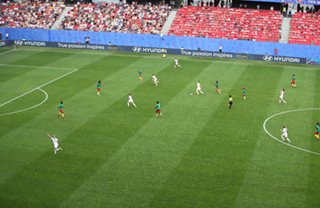
What is creating the attack?
- Peter Glynn
- 17 June 2020
FA courses and webinars discuss the elite game in six phases including: build, create and finish the attack. Here, FA national coach developer and former Arsenal midfielder, Paul Davis, discusses the detail involved when creating the attack.
What is creating the attack?
We believe creating the attack is positive attacking play starting in the middle-third of the pitch. It often involves a combination of on and off the ball play. Creating the attack is play that is positive and moves the ball forward rather than square or backwards.
Where does creating the attack take place?Attacks can be created in lots of different areas of the pitch, but for the purpose of educating coaches on our courses, we refer to creating the attack in the middle third of the pitch.
Of course, it can also happen in the building the attack phase but we’re saying, by and large, most of the creating of the attack will start from that middle section of the pitch.
How does creating the attack happen?
Creating the attack involves both on and off the ball actions.
Off the ball involves how a team creates space both collectively and individually. Coaches should consider:
- How are the team trying to create space for themselves?
- Where are people going within the team? Are they spreading out?
- Where are they spreading out to?
- What are individuals doing to create their own personal space?
- What are the timings of the movements to create space?
This is closely linked with the decision-making of the person on the ball and can include:
- penetrative passes
- one-twos and combination play
- dribbling and running with the ball.
Once the ball is played, creating the attack also involves the supporting runs and movement of the other players.
How does the opposition impact on creating the attack?

Decision-making based on the opposition and state of the game is a key part of creating the attack. For example, if you come up against a team who think they can beat you and they come out at you, there might be a chance to exploit the space in behind their backline - that might be a strategy that you use.
On the other hand, if you know the opposition will drop off and not give you any space behind, you’re going to have to have some other attacking strategies about how you’re going to break the opposition down and create an attack.
How much of creating the attack is planned?For me a good coach has a structure in how they want to play but also allows creativity and the opportunity for instinctive play. Don’t come down on players that try something creative when attacking or who do something that they see at that moment and thought it might come off and it hasn’t. Be brave as a coach to allow your players to make mistakes from your structure.
Read more about Paul’s thoughts on structure and creativity in his interview by clicking here.
Watch our full FA Learning YouTube webinar on creating the attack here.


